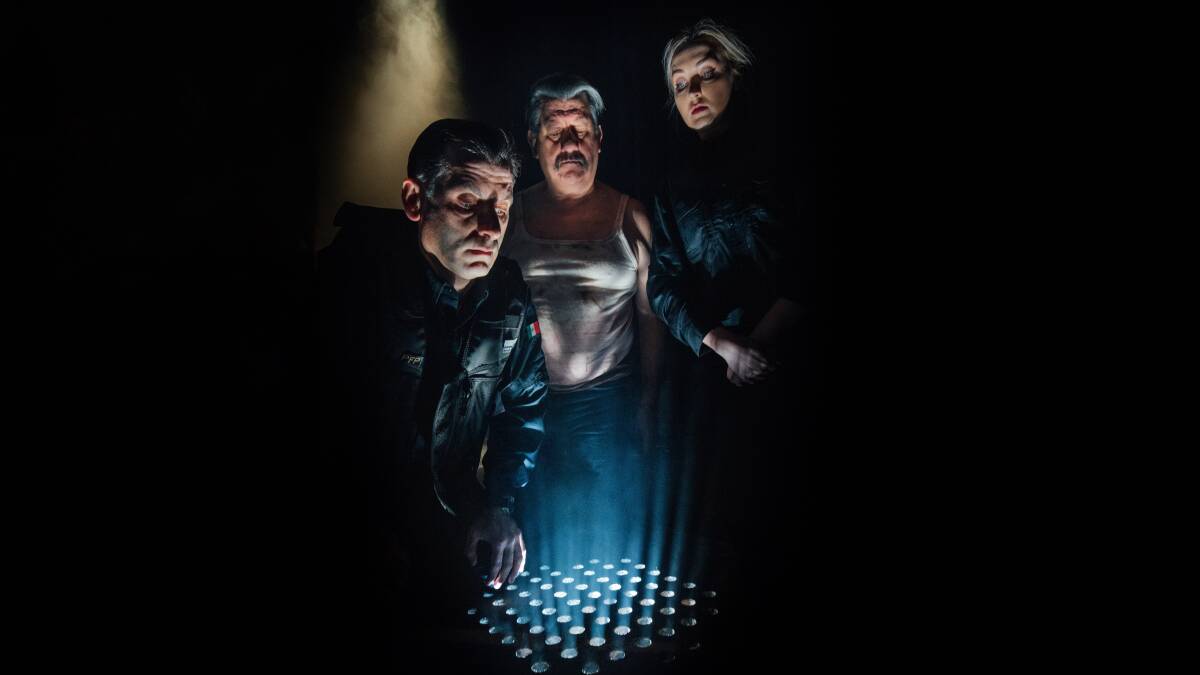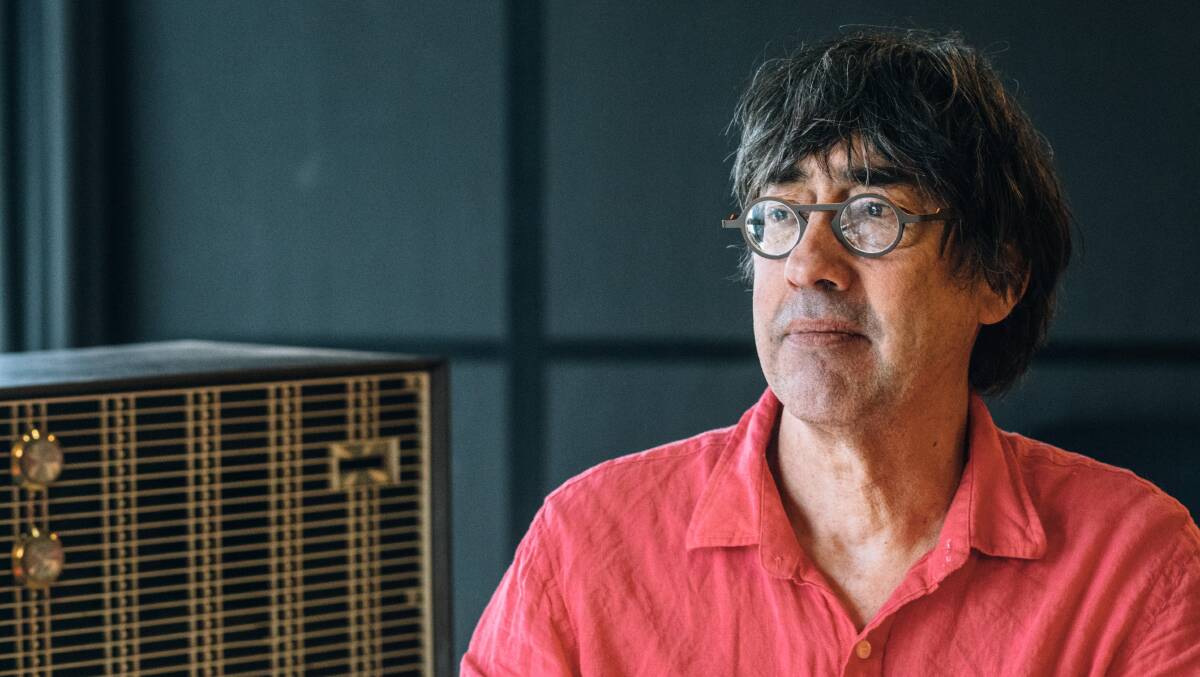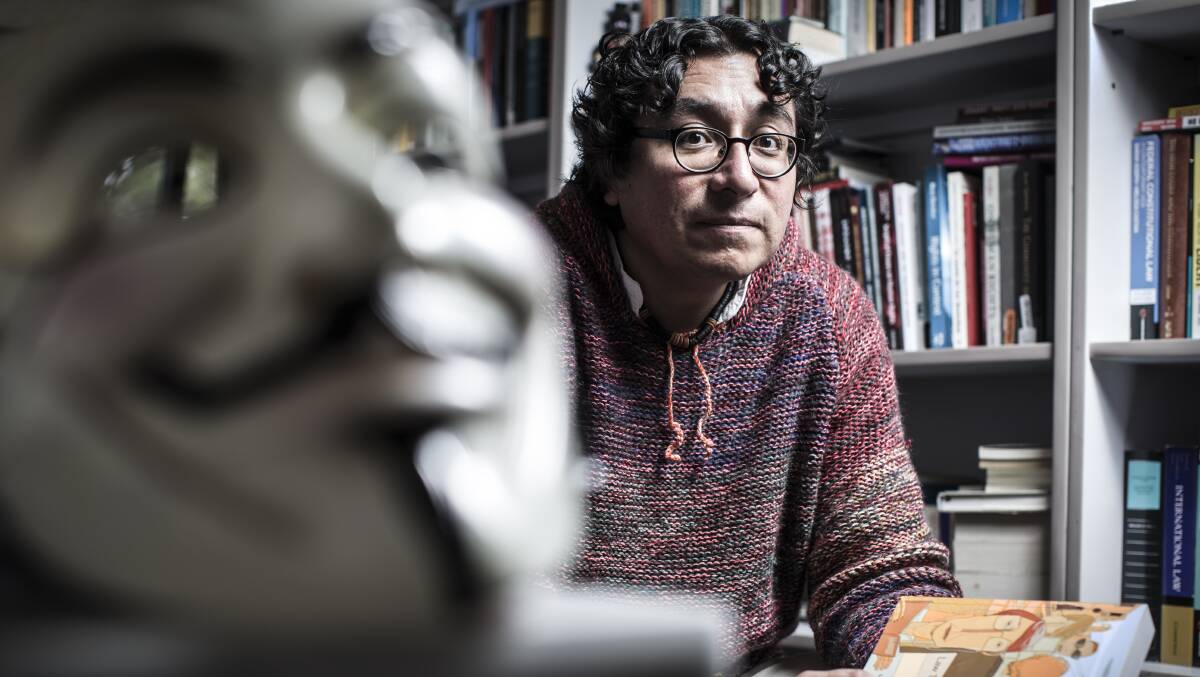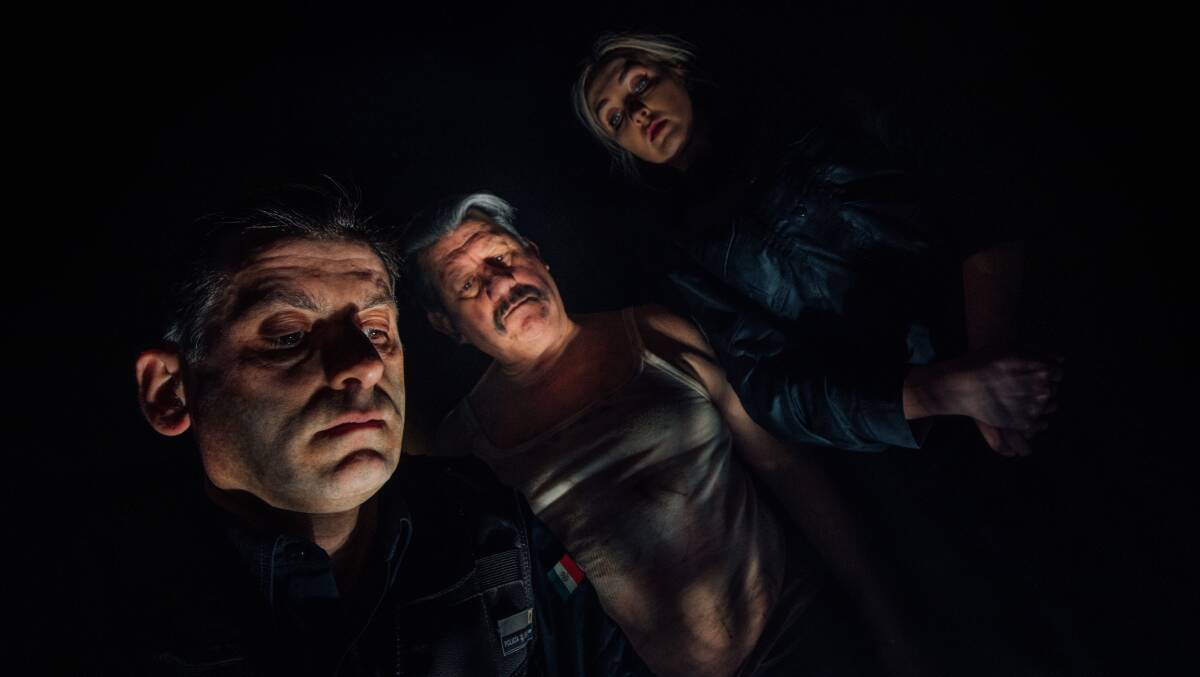
The following article was first printed in August 2021, just before Canberra went into lockdown. At the time, Twenty Minutes With The Devil was ready for its world premiere at The Street. Although the original performance had to be postponed, it is set to take the stage later this month.
Subscribe now for unlimited access.
$0/
(min cost $0)
or signup to continue reading
What would you do if you had 20 minutes with the devil?
Or more to the point, what would you do if you had 20 minutes with Mexican drug lord Joaquin "El Chapo" Guzman?
It was in 2015 that El Chapo was captured, in what was an act of luck as much as anything else.
That day, special forces stormed El Chapo's house in the hopes of capturing the criminal who had escaped from jail only months before. Despite this manpower, the drug lord once again escaped their grasp in tunnels he had built under his house that led to an escape car.
It was actually highway police that eventually pulled El Chapo over for speeding, inadvertently capturing the world's most wanted man. They were given instructions to go to a nearby hotel and wait for backup, which arrived sometime later.

But what happened in those moments alone with El Chapo? It's something law academics and now, playwrights, Luis Gomez Romero and Desmond Manderson, wanted to explore in their upcoming production with The Street, Twenty Minutes With The Devil.
"No one knows what happened in that room. No one has ever said a word about that," Manderson says.
"We do know that El Chapo tried to bribe them and he threatened to kill them. So why did they stay? What was in it for them? What did they think about the situation, about justice, about the corruption, about the drug wars? And so that's the starting point for our play. What did they talk about?
"So the room is real - that really happened - and there's a real problem that the violence and drugs and corruption is destroying the whole society. Then we take off from there and obviously, the rest is fiction."
Both Gomez Romero and Manderson have dedicated their careers to law and culture, with the duo based at the University of Wollongong and the Australian National University, respectively.
As well as this, Gomez Romero also brings his personal experience and knowledge to the table, as he was born and raised in Mexico.

So aside from there not being a record of what actually happened in this time, by stepping away from a historical-inspired account of the El Chapo capture, Gomez Romero and Manderson were able to use their knowledge to make Twenty Minutes With The Devil as a metaphor for modern problems, in particular the distance between law and justice.
"We thought about the use of these two police officers making these difficult decisions - just ordinary people who are faced with the crisis of justice, a global crisis of justice that transcends the war on drugs," Gomez Romero says.
"The war on drugs and someone like El Chapo are just symptoms of a deeper crisis of justice, a deeper crisis of inequality, a deeper crisis of violence, a deeper crisis of corruption, that is not only located in Mexico. It's a global crisis."
It's certainly a concept that has a lot of meat on it - that's part of the reason The Street's artistic director and Twenty Minutes With The Devil director Caroline Stacey was keen to take it on when the duo first came to her with the concept a few years ago.
It was then developed, using not only the El Chapo story as inspiration, but also Mexican fables and mythology, to help tell a story of three people, who are close to this global crisis of violence and justice. It's a story of ghosts and hauntings from people lost to the drug wars, cops, drug cartels, violence, corruption and North vs South.
MUST READS:
Along with this, The Street's production mixes suspense and comedy with magical realism - an element that is prominent in Latin American storytelling - in a work where the living dance with the dead in the locked room of the modern world.
"Good and bad are a luxury in this world. It's complex, and it's messy. And it requires us all to see," Stacey says.
"Each scene is forcing you as a viewer to see things in a different way. And to ask yourself, Well, if I was about to die, what would I do? And what values would I adhere to? And what would I let go of?
"There are deep emotions, and there are a lot of ideas to explore and experience. And the characters really tussle it out in the room, like there is nothing that they don't try to do to each other. And it is a pressure cooker."

That's really how PJ Williams approached his role in Twenty Minutes With The Devil. Taking on the part of El Ticho - the role inspired by El Chapo - a lot of the process of getting into the character was working out how one would become a drug lord to begin with.
"It's as much about sitting in the mindset of somebody who is in this business because there were no other choices. Where he grew up was an area of incredible poverty," Williams says.
"What's been fascinating is watching a bunch of documentaries, and even very recently, Foreign Correspondent, where a journalist went into Sinaloa, Mexico and said why do you do this?
"And they said, 'Well, we're poor. Dirt poor. It's subsistence farming, and there is a cash crop there that is wanted somewhere else'. So they make those choices and then you start to get this multi-generational problem."
Twenty Minutes with the Devil is at The Street from June 17 to 25. For tickets go to thestreet.org.au.
We've made it a whole lot easier for you to have your say. Our new comment platform requires only one log-in to access articles and to join the discussion on The Canberra Times website. Find out how to register so you can enjoy civil, friendly and engaging discussions. See our moderation policy here.
Our journalists work hard to provide local, up-to-date news to the community. This is how you can continue to access our trusted content:
- Bookmark canberratimes.com.au
- Download our app
- Make sure you are signed up for our breaking and regular headlines newsletters
- Follow us on Twitter
- Follow us on Instagram


